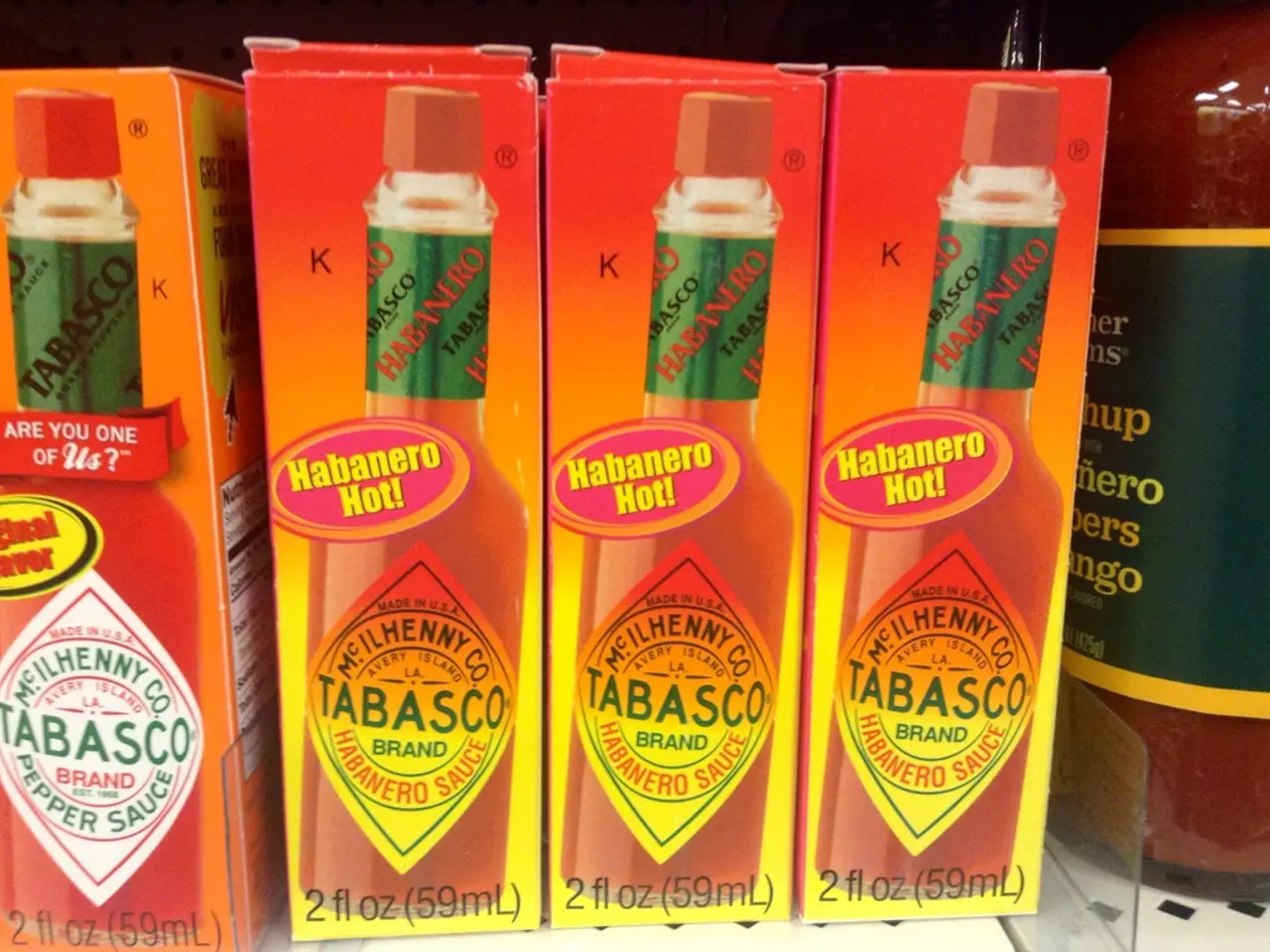Vinegar Market Set to Reach a Value of $8.8 Billion by 2034, Projected at a 3.2% Annual Growth Rate
The vinegar market is witnessing a period of steady growth, fueled by increasing consumer demand for diverse product types, sources, and applications. This growth is particularly notable in North America, where the market is valued at around USD 2.5 billion, accounting for 39.1% of the global market [1].
One of the key drivers of this growth is the rise of health consciousness and demand for natural and organic products. This trend is particularly evident in the increasing popularity of apple cider vinegar, which is projected to grow at a CAGR of around 5.7% to 8.96% between 2025 and 2035, reaching up to USD 2.09 billion by 2030 [3][5].
Innovation is another significant factor in the growth of the vinegar market. Companies like Fleischmann's are introducing new lines of distilled and wine vinegars for both foodservice and retail [2]. Australian Vinegar, for instance, has introduced recyclable bottles for its products and a new apple cider vinegar with probiotics [4].
The market's expansion is also being driven by the diversification of flavors, particularly in ethnic foods and hot sauces that incorporate vinegar as a key ingredient or flavor enhancer [3]. Lemon-flavored vinegar, for example, holds a 36.2% share of the vinegar market's flavor segment in 2024 [1].
De Nigris, an Italian vinegar specialist, has expanded its premium balsamic vinegar line with organic and aged variants [4]. Mizkan America, Inc. has also launched a new rice vinegar line under its Nakano brand, featuring organic and low-sodium options [4]. Kraft Heinz has expanded its Heinz Vinegar range with new flavors like honey-infused and chili vinegar [4].
The vinegar market is sold across various channels, including supermarkets/hypermarkets, drugstores/pharmacies, convenience and online retail stores, and foodservice sectors [5]. Online retail and modern trade channels are expected to grow faster due to convenience and wider consumer access [5]. Supermarkets and hypermarkets lead vinegar sales channels, holding a 38.5% share in global distribution networks [1].
The Food and Beverages sector accounts for 56.1% of the vinegar market demand in 2024 [1]. Mizkan is promoting vinegar-based wellness drinks in the U.S. [4]. The Kraft Heinz Company is leveraging its global distribution network to push vinegar-based condiments in emerging markets [4].
The expansion of vinegar applications in healthcare and cleaning industries is also stimulating R&D investments, fostering technological advancements [1]. This growth significantly influences the global economy by fostering job creation, supporting agricultural supply chains, and driving innovation [1].
In 2024, synthetic vinegar dominates the vinegar market with a 68.8% share [1]. However, the increased demand for organic and specialty vinegars is boosting production, particularly in regions like the Asia-Pacific and North America [1].
Looking forward, the market is moderately consolidated with key players and emerging startups accelerating growth by launching innovative product variants and strategic partnerships [1]. Increased health awareness and preference for natural, organic, and ethnic food products will continue to drive demand [1]. Functional wellness applications will expand the market scope, especially for apple cider vinegar [1].
Mizkan continues to invest in eco-friendly production and packaging innovations [4]. Synthetic vinegar's dominance may be challenged as consumer preference shifts towards more natural and organic alternatives [1]. The Global Vinegar Market is expected to reach USD 8.8 billion by 2034, growing at a CAGR of 3.2% from 2025 to 2034 [1].
References: [1] Grand View Research. (2021). Vinegar Market Size, Share & Trends Analysis Report By Product (Apple Cider Vinegar, White Vinegar, Rice Vinegar, Balsamic Vinegar, Wine Vinegar, Others), By Source (Organic, Conventional), By Flavor (Lemon, Lime, Others), By Application (Food & Beverages, Pharmaceuticals, Personal Care, Others), By Region, And Segment Forecasts, 2021 - 2030. [2] Statista. (2021). Global vinegar market size 2020. [3] Allied Market Research. (2020). Vinegar Market: Global Opportunity Analysis and Industry Forecast, 2020-2027. [4] Food Business News. (2021). Mizkan, Kraft Heinz launch new vinegar products. [5] ResearchAndMarkets. (2021). Global Vinegar Market Report 2021: COVID-19 Growth and Change to 2030.
The growth in the vinegar market is not only limited to the food and beverages industry, but it also extends to finance, as companies invest in research and development for eco-friendly production and packaging innovations. Business strategists are forecasting the global vinegar market to reach USD 8.8 billion by 2034, providing significant economic growth and job creation. This growth is influenced by increasing consumer demand for natural, organic, and ethnic food products, as well as the expansion of vinegar applications in healthcare and cleaning industries.




